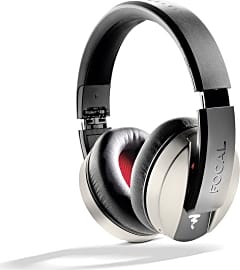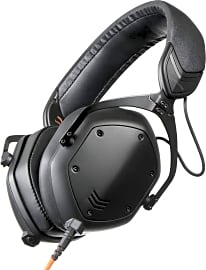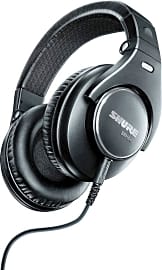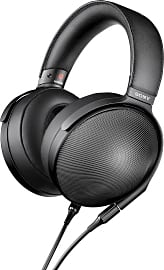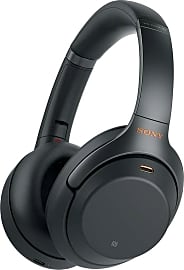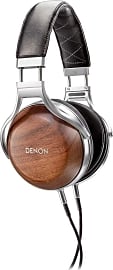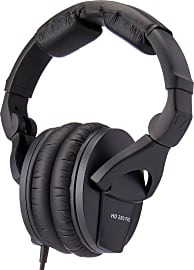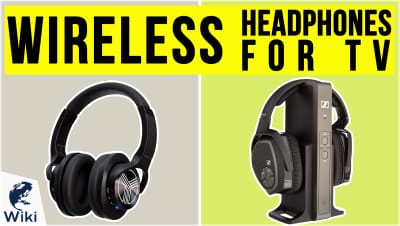The 10 Best Closed Back Headphones

This wiki has been updated 38 times since it was first published in July of 2015. If you're on the hunt for audiophile-level sound quality, take a look at these closed-back headphones. Their sealed design allows for greater frequency response, more accurate reproduction, and effective passive noise isolation that everyday over-ears can't always match. With options in every price range, a pair of these top-rated cans will suit almost anyone's needs. When users buy our independently chosen editorial recommendations, we may earn commissions to help fund the Wiki.
Editor's Notes
December 22, 2020:
Our latest revision of this list includes just two replacements, as even the models that have been around for a while are industry-standards that are still very much in demand for personal and professional use.
Firstly, we upgraded the V-Moda Crossfade M-100 to the newer Crossfade M-100 Master. While you might not be able to tell the difference as far as appearances are concerned, as they sport the same overall aesthetics, they are re-engineered for better clarity and certified by the Japan Audio Society for their excellent sound reproduction, which makes them ideal for use in studio applications.
Next, we added the Shure SRH840, as we felt this well-known manufacturer of high-quality (some might say legendary) microphones and headphones deserved a place within our ranking. As a recent addition to their extensive product line, these cans produce impressive results and are built for durability, with many of their parts being easily replaceable. They even come with a spare set of ear-pads, helping to ensure many years of use from this affordable option.
May 29, 2019:
Closed-back headphones do a couple main things differently from open-back cans. The first thing you'll probably notice is that they have a stronger bass response, simply because of how they're constructed. But most importantly, they isolate sound: what's on the inside stays on the inside, and vice versa, generally speaking. The Sennheiser HD280 and Audio-Technica ATH-M50x are both very frequently found in music studios, so if you're looking for a set of monitoring headphones, those are great bets. If you're a casual music fan who wants something that sounds great, The Focal Listen are awfully tough to beat. They're from one of the most respected audiophile brands, but unlike most of their stuff, they don't cost a fortune. The very same can be said of the Beyerdynamics. It's actually impressive that both of these companies offer such high-quality cans for such reasonable prices. If you want to really keep costs down, Superlux makes a handful of great models, and the 685s are among their best.
If you're looking for wireless, there are two fantastic choices that we've highlighted. Bose's new 700s hit the market on June 30th; they aren't meant to replace the famed QC35s, but they are engineered to exceed them in quality and noise-canceling ability. Sony's WH1000 line is in its third iteration, and aside from a few nitpicks like their sound bleed and the inability to use their ANC without an active connection (wired or wireless), they're really amazing headphones. If you're using a recent Android phone, the Sonys will let you take advantage of the brand's cutting-edge LDAC codec.
The Denons and the Sony MDRs are top-dollar options and, if you're willing to make the investment, may just leave you speechless at their detailed reproduction and wide sound stage. But don't say we didn't warn you: they're really expensive.
Special Honors
Creative SXFI Air These are an interesting pair. They're one of the few brand-name headphones with a slot for a micro SD card and can read a variety of audio formats, including the highly respected .FLAC lossless codec. They also have a high-quality microphone, Bluetooth 4.2, and a customizable RGB ring, which makes them stand out as some of the best gaming-oriented cans that also have audiophile-level sound. creative.com
Audeze LCD-2 Closed Back Planar Magnetic headphones are not for everyone, nor are they ideal for every single genre of music. But if you know what you're listening for, they can deliver incomparable clarity and can transport you to other worlds. You'll also need to make sure have the right amplifier, as they aren't designed for plugging directly into a smartphone or laptop. Audeze is well-known in the audiophile world for their planar magnetic designs, and this particular pair is one of the only ones they offer with such excellent isolation. audeze.com
Bowers & Wilkins P9 Signature If you're focused on closed-back cans, you're likely best served with an over-ear model. These are technically circum-aural, but they're also a bit smaller than most others and don't quite block outside sounds the way many others do. Nonetheless, for the right user, they're an incredible set of headphones, from one of the most popular high-end manufacturers around. They'll set you back a pretty penny, but they not only sound fantastic, they'll look wonderful perched on your head. bowerswilkins.com
Closed Back Versus Open Back Headphones
This also makes open back headphones safer when exercising outside.
While many tech terms can be misleading, open back and closed back headphones actually describe exactly what the each headphone has. Closed back headphones have earcups which are completely sealed, while open back headphones have backs that are not completely sealed.
In nearly every mass produced pair of headphones, the tiny speaker driver inside emits sound in both directions, towards your ear and away from it. With open back headphones, that sound leaks out into the air potentially disturbing others around you. Closed back headphones almost completely block the sound leakage, providing roughly 10dB of noise reduction so nobody else has to hear what you are hearing.
This noise isolation also affects how music sounds to the headphones wearer. Since closed back headphones isolate you from the outside world, the music sounds almost like it is playing inside your head. No background noises will interfere with the music listening experience and the wearer will be able to hear every minute detail. This is why studio monitors nearly always have a closed back design and why sound engineers prefer them.
While this can be fantastic for audiophiles, it can be problematic when wearing the headphones while performing outside activities. If one is wearing a pair of closed back headphones they may not hear a car horn honk or somebody yelling out a warning. But if one truly wants to get lost in the music, closed back headphones are the best choice.
Open back headphones produce a larger sound stage kind of experience more akin to what you hear when listening to a pair of speakers in a room or at a concert. Some people prefer this kind of experience as they don't feel completely cut off from the world when listening to music. This also makes open back headphones safer when exercising outside. It also makes them a better choice if you were reading a book at the beach and wanted to hear the sounds of the waves crashing along with your music, or other similar situations where you want to hear the ambient noise intermingle with your music.
How To Pick The Perfect Pair Of Headphones
There is nothing better than finding that perfect pair of headphones that fits great, sounds even better, and handles the trials and tribulations you will be subjecting them too. Unfortunately this is easier said than done, mostly because the average consumer focuses on the wrong features when making their purchase decision.
You can determine their durability by looking at the materials they are made from.
This may seem counter intuitive when trying to pick out a pair of headphones, but sound is actually one of the last things most buyers should focus on. Unless you are a die-hard audiophile, most won't notice much of a difference in sound between two pairs of high-end headphones. Now if one were to compare a pair of cheap headphones to a pair of high-end headphones, the sound difference would be obvious.
The first step is two determine a budget you are prepared to spend. Once you have a budget determined, you can start to compare some different models.
The main two considerations should be how compatible they are with your lifestyle needs and their comfort level. If you buy a pair that is not comfortable or don't conform to your needs, it doesn't matter how great they sound, you will most likely rarely wind up using them. Those that want a pair for traveling will need totally different features than those who will primarily be listening to headphones in their home. If you plan on using your headphones for on the go listening, make sure to consider their portability and build quality. You can determine their durability by looking at the materials they are made from. Look for aircraft-grade aluminum, carbon fiber, and other materials of similar strength.
Finding a pair of comfortable headphones is vital, especially if you plan on listening to them for more than twenty minutes at a time. If you cannot try them on, the best way to gauge their comfort is by looking at features like weight, earcup cushion material, size adjustability, and headband padding.
Sound Specs You Need To Know
It is easy to get confused by all of the complicated specifications and terms manufacturers use when describing their headphones, but there are only a couple you really need to understand regarding how they will sound.
The higher the sound pressure level, the louder the headphones will be able to get with a particular audio source.
Most look to frequency response range first, but unless the manufacturer lists the frequency response range with ±3dB next to it, the spec is essentially useless. If they have ±3dB, which means they are telling you the frequency response while maintaining volume within a 3dB range, then you can pay attention to the spec and look for one rated at 20-20,000Hz, the lower number being the bass response cut-off and the higher number being the treble roll-off.
Total harmonic distortion (THD) is extremely important as this tells you how prone the headphones are to sound distortion at higher volumes. When headphones are played at high volumes, there is a chance that diaphragm may not be able to move fast enough, which results in sound distortion like popping and crackling. The lower the THD percentage, the less possibility of sound distortion at high volumes. Good headphone manufacturers have a THD of 1% or less, while the best have below 0.1%.
One should also look at the sound pressure level. This is a measurement that taken by playing a 1 kilohertz note at a power level of 1Vrms, and then recording the decibel level produced by the headphones. The higher the sound pressure level, the louder the headphones will be able to get with a particular audio source.




